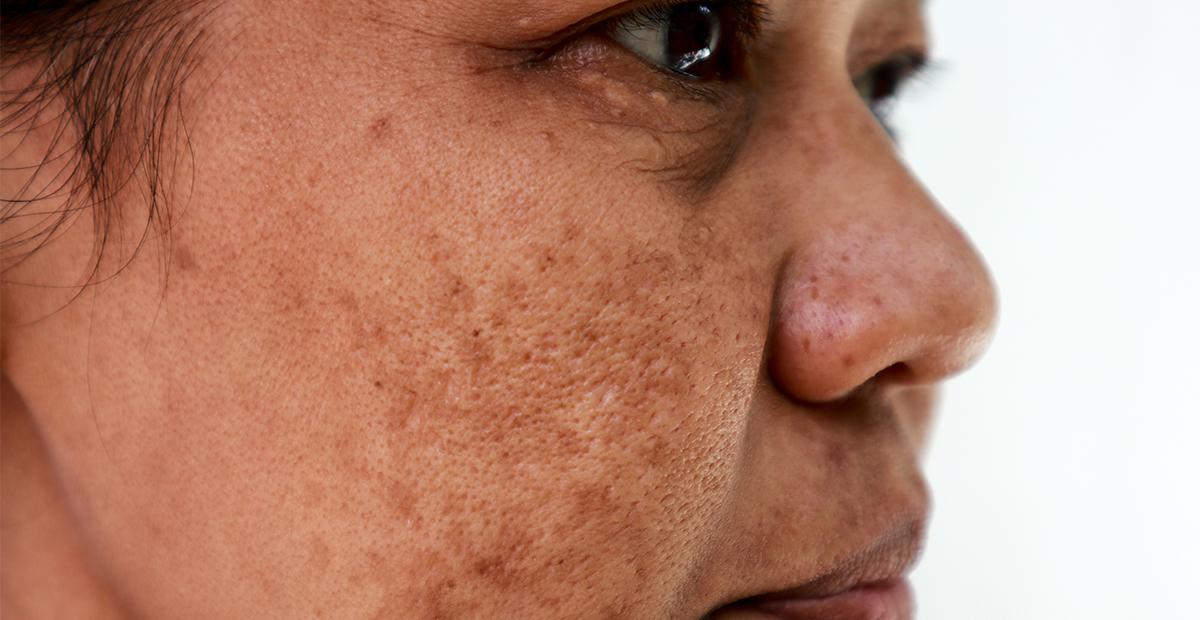Often affecting women, melasma is a skin condition that causes patches or spots of skin that are darker than a person’s natural skin tone. Melasma is sometimes referred to as “the mask of pregnancy” and is one of the leading causes of visits to dermatologists around the world.
Beth Lertzman, MD, is a dermatologist at WNY Genesee Valley Dermatology & Laser Centre in Brighton and explains how dermatologists recognize melasma, how it can be treated, and what can be done to prevent it.
How melasma starts
Most people with melasma develop the condition between ages 20 and 45. Occurring much more frequently in women than men, those who develop melasma often have at least one of three main risk factors:
- family history
- increased estrogen
- sun exposure
Melasma stems from an overproduction of melanin by pigment cells in your skin deposited in the epidermis (top most layer of skin) and dermis (next layer of skin). Depending on where the melanin is deposited, it might be slightly more difficult to treat.
“Melasma is not life-threatening, but it is a very concerning problem for women,” Dr. Lertzman said. “It is one of the leading causes of visits to dermatologists worldwide.”
Recognizing and treating melasma
Melasma usually shows up on different areas of the face, including:
- cheeks
- chin
- forehead
- upper lip
Some people will develop melasma on their forearms or neck, although this is less common. People with melasma can identify it as splotchy blotches that are symmetrical.
“Be careful when treating melasma; treating your skin with anything that is irritating to it can actually worsen the discoloration,” Dr. Lertzman said.
Unfortunately, there is not a cure for melasma. It is a condition that can be managed. The most commonly prescribed treatment is a triple-action cream combining a hydroquinone, retinoid, and steroid. This treatment needs to be used continuously, otherwise there is a risk of melasma returning.
Other treatments include:
- azelaic acid cream
- kojic acid cream
- cysteamine cream
- vitamin C cream
- tranexamic acid (prescribed oral medication)
Each of these treatments takes at least four weeks to start showing results and can be irritating to the skin sometimes. These can be applied at home but patient should check in with a provider periodically to note their progress.
“We’ll have patients use prescription products for a time, then switch to topical non-prescription products, and return to prescription products so there is a cycle of treatments,” Dr. Lertzman said.
Dermatologists also offer other supplemental treatments to lessen the effects of melasma, such as chemical peels, laser skin removal, and microneedling.
Preventing melasma
The most important thing a person can do to lessen the effects of melasma is to keep the UV light from hitting the skin. Wearing sunscreen as protection really helps with this – specifically sunscreen with iron oxide.
“Iron oxide helps to block all visible light that is hitting your skin, even when you’re sitting inside,” Dr. Lertzman said. “All spectrums of light can make melasma worse. It's not going to completely take it away, but it's going to keep it from coming back as consistently.”
If a woman is on birth control with exogenous estrogen, Dr. Lertzman also recommends talking with their OBGYN about changing birth control methods since some data suggests exogenous estrogen can increase the likelihood of developing melasma.
Avoid using creams that are not FDA approved or are brought in from out of the country. They may actually make melasma worse if they are used inappropriately.










